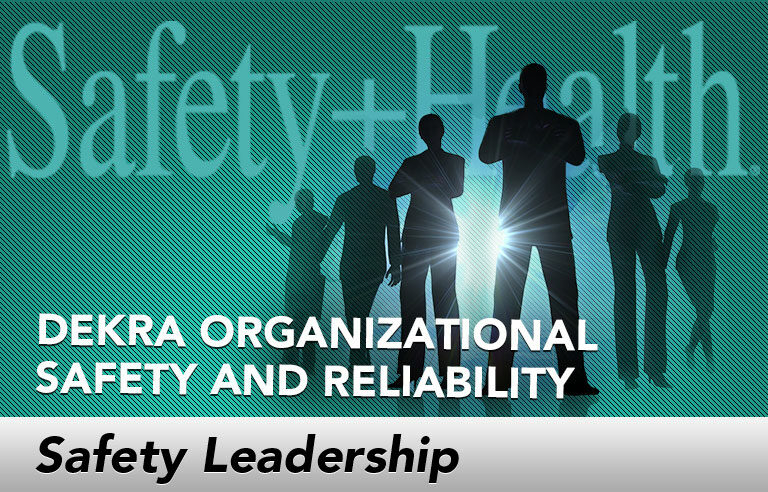Safety Leadership: Safety analytics: Knowing your data

Editor’s Note: Achieving and sustaining an injury-free workplace demands strong leadership. In this monthly column, experts from global consulting firm DEKRA Insight share their point of view on what leaders need to know to guide their organizations to safety excellence.
Your CEO wants to know whether you can predict the next rash of incidents. You can list several issues off the top of your head: production pressure, job changes, lack of training, employees putting their fingers in the wrong places. But the CEO wants scientific evidence about what’s going to happen. You pull together your data and see that more incidents involve newer employees – supporting your hypothesis about lack of training. Cuts to hands are a big issue, too.
But this analysis leaves you wondering: How do you know if you really identified the issues? And what about job changes or production pressure? Those data aren’t available.
What you really want is a predictive model: A prediction says or estimates how much more or less likely an incident is to happen as a consequence of “something.” The bigger objective is to do this so that you can control that “something” and reduce the likelihood of incidents.
Improving your analytics starts with knowing your data and how to leverage what’s available to you.
Steps toward a predictive model
Look beyond your outcome data. If the only data you have in front of you is an incident report, you will not be able to find the “something” that predicts, except for past performance trends. Furthermore, reviewing incidents leads to a bias toward the immediate causes, which tend to look like employee training or experience, or “sticking fingers in the wrong places.” Expand your view of safety data. Safety observations and job hazard analyses are a good start to get to know what hazards exist and in what frequency, and therefore are more or less likely to result in incidents.
Expand your vantage point. Interview other data-keepers in the organization. Human Resources typically has data describing employee training, experience and job assignments. Payroll may have details regarding employee time records and shifts and daily work assignments. Operations may have data that can describe typical daily or monthly production. Find out what data you may be able to capture that is already a part of your business process. Forage for data rather than invent your own.
Create connections between the safety data and other available data. For example, groupings of locations set up for safety observations can correspond to location groups reported in incident reports, which in turn can be the same as (or mapped to) the location groups defined by production data. Employee identifiers in incident reports can connect to HR data that may provide employee training and start dates, and perhaps connect to employee time sheets that capture actual job assignments. Now you can look for relationships between job assignments, overtime or training, or shift changes and outcomes.
Cascade risk exposure categories and definitions. For example, pre-job hazard analyses identify risk exposures that are relevant to the work taking place. The same risk exposure categories could be used as critical items during safety observations, and can also be captured in incident investigations and near-misses. This way, you can measure the amount of exposure that exists and see if some exposures are associated with higher-than-expected incident potential.
Capture more cases. Finally, fully investigate incidents that could have resulted in severe or fatal outcomes, but didn’t. Incidents can be rare, which makes prediction more challenging. This makes the target a bit bigger and also helps gather more evidence around the risk exposures that matter most.
Creating connections and gathering data from various organizational viewpoints creates an opportunity to develop a predictive model. Getting there is not easy and requires collaboration and support, but the promise of finding that “something” that will make a difference to safety makes the effort worthwhile.
This article represents the views of the author and should not be construed as a National Safety Council endorsement.
 Gennifer Lyon is manager of research and development at DEKRA Insight (dekra-insight.com), where she designs and supports safety improvement technologies. Leveraging applied research and evidence-based methodologies, Lyon helps clients achieve their highest safety objectives.
Gennifer Lyon is manager of research and development at DEKRA Insight (dekra-insight.com), where she designs and supports safety improvement technologies. Leveraging applied research and evidence-based methodologies, Lyon helps clients achieve their highest safety objectives.
Direct to your inbox: Sign up to be notified in email about new Safety Leadership columns.
Post a comment to this article
Safety+Health welcomes comments that promote respectful dialogue. Please stay on topic. Comments that contain personal attacks, profanity or abusive language – or those aggressively promoting products or services – will be removed. We reserve the right to determine which comments violate our comment policy. (Anonymous comments are welcome; merely skip the “name” field in the comment box. An email address is required but will not be included with your comment.)

